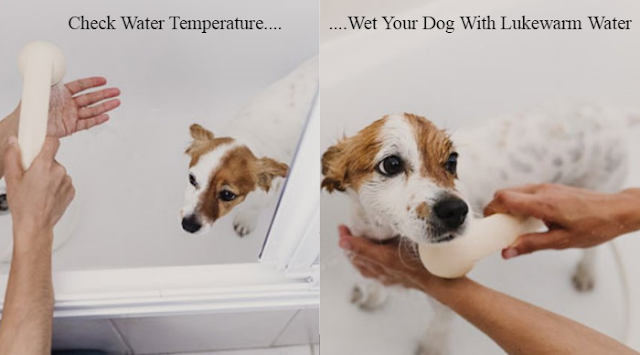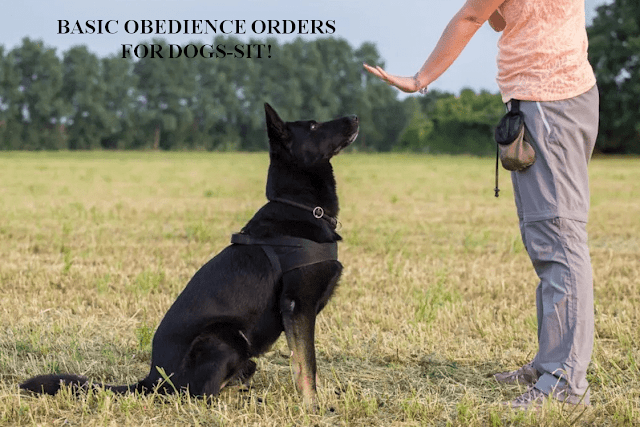DOG BATH
Dog bath is an indispensable act of hygiene, a
prerequisite for any subsequent grooming and for maintaining healthy skin and
coat.
However, dog bath requires a certain method and
preparations that will help transform this moment, a little painful for your
doggie, into a real moment of complicity. The ideal is to get your dog used to
the bathing ritual as early as possible and especially to the drying that
follows, especially if you use a hairdryer.
When to give your dog a bath?
As a general rule, dogs should only be bathed when
they are really dirty, when they start to give off an unpleasant odor or if,
during a walk, they have rolled around in something that smells particularly
bad. Alas, droppings, manure, dung, and various excrement tend to attract them
irresistibly like magnets!
Bathing can also take place if you notice that their
hair is very tangled and brushing becomes ineffective or if their skin itches.
Dogs should not be bathed too often as this will damage the protective layer of
sebum on their skin. A maximum bathing frequency of every month or even every
2-3 months is usually more than sufficient.
What do I need?
The simplest way is to use your own bathtub or,
failing that, your shower tray. There are also tubs - similar to small children's
pools - specially designed to bathe your pet and sold in pet stores. A garden
or, if you don't have one, a balcony is required to install the tub.
If you have a very small bathroom and/or a large dog,
you should know that there are "dog washes" in some cities. These are
washing stations where owners can come and wash their dogs themselves for a
fairly small fee. The washing station provides large tubs as well as areas for
brushing, mowing, clipping the animal's nails and of course drying it. The
advantage? No need to clean the bathroom completely.
Outside the bathtub, you will also need a brush to
untangle your dog's hair before bathing. Once the hairs are wet, the knots
tighten and become almost impossible to untangle. So remember to brush your dog
meticulously before washing him. Use this time to inspect your dog from every
angle and check for small wounds, lumps, parasites, etc.
If your doggie is not a fan of the toilet with an ace
of escape, it will be recommended to tie him up to prevent him from injuring
himself. Ideally, give him a collar that you will attach to the sidewall using
a small hook fixed in the wall or mounted on a suction cup. To prevent him from
slipping, equip the bathtub or shower tray with a non-slip mat or, failing
that, an old towel which, once wet, will do the trick.
Of course, make sure you have a special shampoo for
dogs. Ban the use of shampoo for human beings, including baby shampoo, which is
not adapted to the nature of its fragile skin. There are also detangling
products to be applied after shampooing, to be reserved for dogs with long hair
and if brushing has not been able to get rid of all the knots.
Finally, provide plenty of clean towels for drying. If
your dog is not afraid to, you can use a hairdryer to speed up the process.
There are even special hair dryers for dogs that are more powerful, so you can
dry your doggies in no time at all.
Dog bath: How to do it?
1. Place your dog in the empty bathtub or under the
shower then, once calm, wet your dog
with lukewarm water (between 28 and 35°C maximum) using the hand shower. Make
sure that the water penetrates well under the topcoat to the dog's skin. Wet
the dog's entire body, taking care that the water does not run into his eyes or
ears. You can even protect your dog's ears by inserting a small piece of
sterile gauze into them while you are washing.
2. Once the coat is well wet, apply a few drops of
shampoo all over the dog's body and emulsify the product without forgetting to
rub his belly, the underside of the tail and the chest. Massage your doggie
while talking to him and finish by cleaning his paws. Take a dab of shampoo if
necessary and massage the paws without forgetting the gaps between his fingers.
3. Then rinse your dog with warm water. Rinse
abundantly until there is absolutely no more shampoo and the rinsing water
becomes perfectly clear. Again, be careful with eyes and ears! Rinsing is a
crucial step. Incomplete rinsing will dull the hair and irritate your pet's
skin. If you use a detangling product, apply the product after shampooing
followed by a complete rinse and then rinse again for a long time to remove any
product residue on your pet's skin.
4. Once the washing phase is over, proceed to dry.
After letting your dog snort, apply a towel to your pet's back and rub gently.
Replace the towel with another, dry until the animal no longer feels the need
to shake.
You can complete this summary drying with a hairdryer
if your pet is not afraid of it. Indeed, this device, harmless for us, is very
noisy and all the more so for the ultra-developed hearing of our dear pets.
Therefore, it can be particularly
frightening if the animal has not been used to it since its earliest childhood.
If he is afraid of it, don't insist and let him dry out in the warmth, inside
if it's cold outside. If he tolerates hair drying, take care not to burn your
pet's skin. Set it to moderate temperature and run the hairdryer at a
respectable distance from his coat and do not stop moving the hairdryer.
5. Finish this moment with a reward: a treat or a
game for your dog that will make him forget a “dirty quarter of an hour” he
just spent!





















